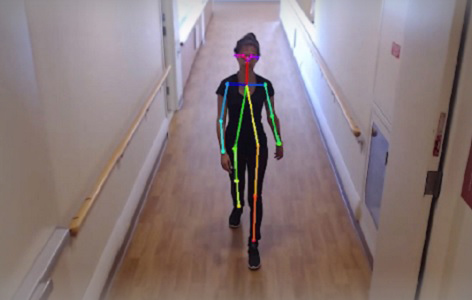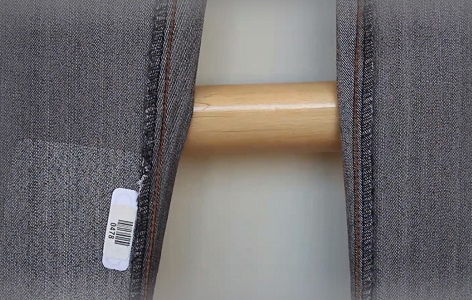
By: Tyler Saumur, ORT Times Writer
The “white-coat effect”—or the effect of research on a subject’s behaviour either consciously or subconsciously—is quite common in observational research. For example, when a researcher asks you to “walk as you normally would,” you may unconsciously change aspects of your gait that might be further accentuated by the addition of sensors or markers. A group of researchers at the KITE Research Institute has attempted to solve this problem using video cameras and computer vision technology to study the gait of individuals in the ‘real world’.
The AMBIENT project led by Drs. Andrea Iaboni and Babak Taati provides a continuous view into the gait of older adults and those with dementia to better understand and predict the risk of falling. “Most long-term care assessments are focused on mobility function, such as whether a person can walk on their own or if they need help. Formal assessments of gait can be done by physical therapists, but these individuals are scarce in the long-term care setting. Gait is also rarely assessed longitudinally to reveal changes over time,” states Dr. Iaboni, a geriatric psychiatrist and clinical researcher at KITE. However, understanding changes over time is vital to predicting the likelihood of a fall. Previous work has shown that certain changes in gait over the period of a week can increase your risk of falling from 20 to 86%. Providing a full picture of someone’s gait can help identify individuals who may be at a greater risk of falling.
The AMBIENT project uses an Xbox Kinect camera to extract joint information from consenting participants. Radiofrequency identification (RFID) tags placed on participants’ clothing cue the camera to record when paired with software that only activates the camera when a single person is identified in the view of the camera; this is vital to protect the privacy of other staff, patients and visitors. In an initial study, the researchers demonstrated that the technology can be used to track individuals with dementia on the Specialized Dementia Unit at the Toronto Rehabilitation Institute for up to 2.5 months. In a second study, gait features were tracked among 52 patients with dementia to determine which gait features were associated with short-term falls risk. The researchers found that an individual’s lateral gait stability was an important predictor of short-term falls. “As a marker over time of increasing unsteadiness of gait and a signal that there is a need to reassess or intervene, it is important to understand how margin of stability varies based on changes in various falls risk factors such as medication or health status changes,” says Dr. Iaboni.
Recently, the team received a CIHR grant to expand the application of the AMBIENT system. With the new funding, the researchers will collect data across more individuals, over a prolonged period of time. This will enable them to examine the relationship between gait and other important medical events other than falls.

RFID tags sewn into participant’s clothing are used to activate cameras.




